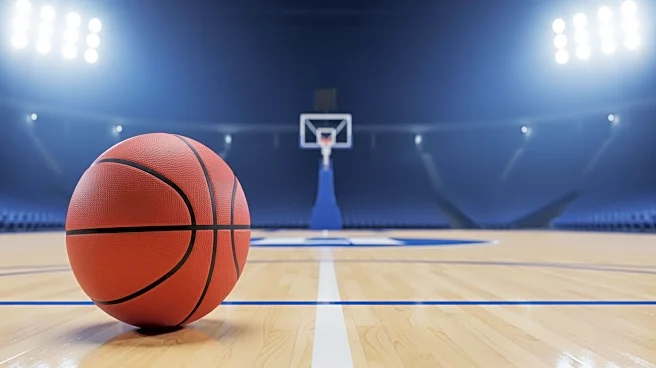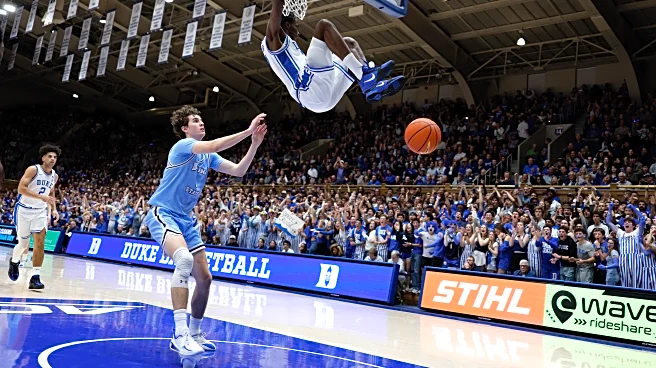What's Happening?
Duke University’s basketball team secured a decisive victory over Indiana State with a score of 100-62. Freshman forward Cameron Boozer was instrumental in the win, scoring a season-high 35 points, 23 of which were in the first half. Boozer also contributed
12 rebounds and five assists, showcasing his all-around skills. Duke, ranked No. 4, demonstrated their offensive prowess by achieving three double-figure scoring runs during the game. Indiana State initially took a 14-4 lead with four 3-pointers but struggled to maintain momentum against Duke’s aggressive play. The Sycamores committed 12 turnovers in the first half, which contributed to their defeat. This game marked Indiana State’s only matchup against a power-conference opponent this season.
Why It's Important?
The victory for Duke highlights their strong start to the season, maintaining an undefeated record at 4-0. Cameron Boozer’s performance is particularly noteworthy as it ties for the second-most points scored by a Duke freshman, indicating his potential impact on the team’s success this season. For Indiana State, the game served as a challenging test against a top-tier opponent, providing valuable experience despite the loss. Duke’s ability to reach 100 points in consecutive games for the first time in nearly eight years underscores their offensive capabilities, which could be crucial in upcoming high-stakes matches, including their next game against Kansas.
What's Next?
Duke is set to face No. 25 Kansas at Madison Square Garden, a game that promises to be a significant test of their abilities against another ranked team. Indiana State will return home to play against Louisiana Tech, aiming to rebound from their loss and improve their record. Both teams will be looking to refine their strategies and address any weaknesses exposed during this matchup.
Beyond the Headlines
Duke’s performance, particularly Boozer’s, may influence scouting and recruitment strategies as colleges look to attract top talent. The game also highlights the disparity between power-conference teams and smaller programs, raising questions about competitive balance and scheduling in college basketball.















